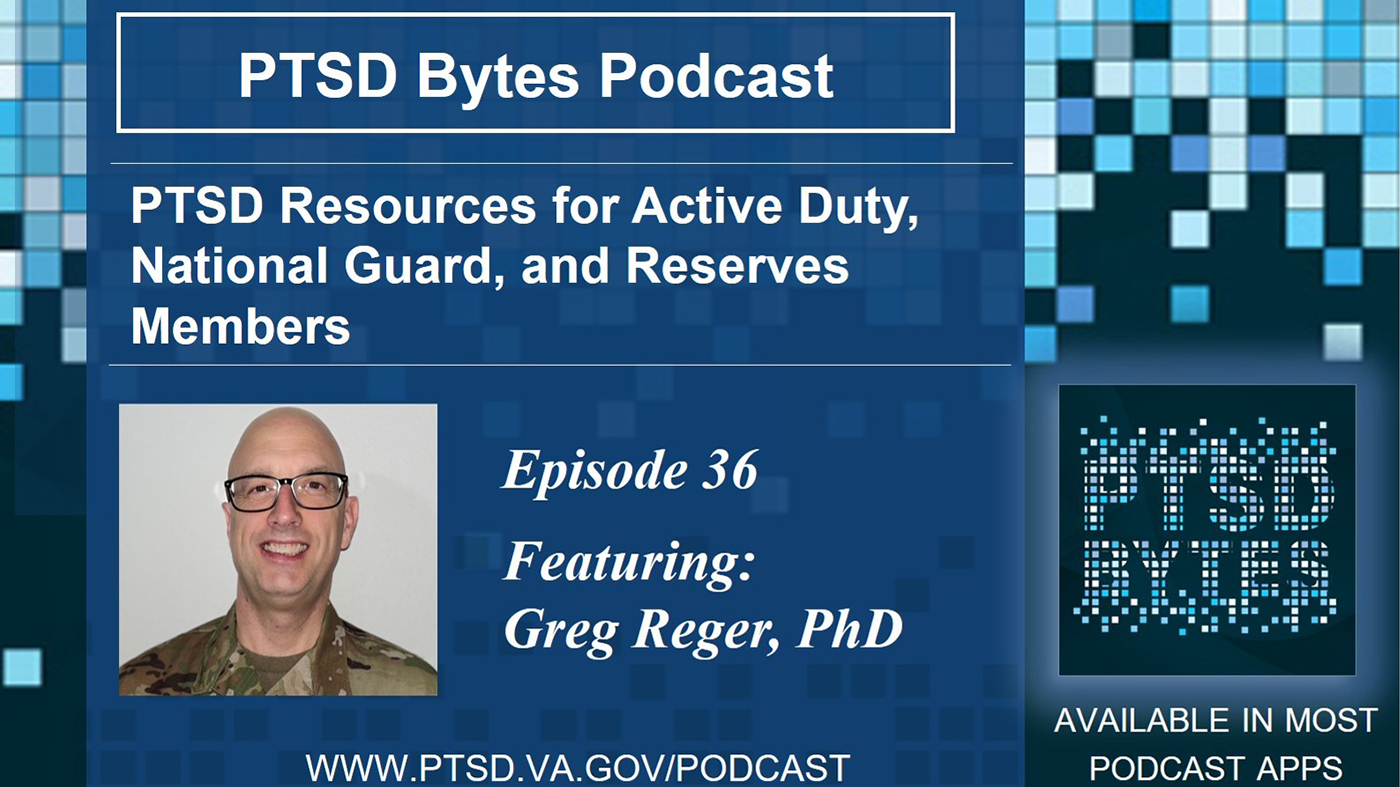In this episode of the PTSD Bytes podcast, host Dr. Colleen Becket-Davenport discusses the unique challenges faced by active duty and reserve component service members with Dr. Greg Reger, clinical psychologist, Lieutenant Colonel and Behavioral Health Officer in the Washington State Army National Guard.
Active duty vs National Guard/Reserve
Active duty service members are full-time professional military personnel, and the Reserve consists of part-time service members. Reservists can be put on active duty via state or federal orders where they become full-time military personnel. The National Guard is also part of the Reserve, but serves both their state and their nation. Active duty, Reservists and National Guard all include units training to serve in combat that can deploy.
Different exposures to trauma
In addition to combat, service members may experience trauma during training, military vehicle accidents, helicopter or airplane accidents; they can experience sexual trauma and physical assaults in both military and civilian contexts. Active duty and Reserve component service members have similar risks of trauma exposure though Reserve component service, and may face fewer military related traumatic events due to spending more time in civilian life.
This poses different challenges because civilian life lacks the military structure that comes with the accountability, supervision and battle buddies to notice when someone is having behavioral health problems. An especially vulnerable time can occur when a Reserve component service member joins a new unit for deployments and they endure deployment-related stress and post-deployment readjustment without the built-in support of an established military family.
Challenges in accessing mental health treatment
Every service member who is on active duty for at least 30 days has access to DOD military treatment facilities at no cost, but traditional Reservists or Guard members who need treatment for PTSD cannot go to their military treatment facility. Instead, they work with behavioral health officers who support them in identifying the use of their insurance, such as TRICARE Reserve Select or their civilian insurance.
Other times, they may be eligible for VA, Vet Centers or a range of community resources or nonprofits. It can be a challenge to identify behavioral health resources especially in rural areas. Anyone who wonders if they’re eligible for VA care should talk to an eligibility counselor at their local VA facility.
Free digital PTSD resources
Three common problems among Reserve component service members are stress, anger and sleep difficulties. All have well-designed, free VA apps that may help, such as the Mindfulness Coach, Aims for Anger Management and Insomnia Coach. If you have thoughts about suicide or self-harm, it would be helpful to try the Safety Plan app to develop an easy-to-access safety plan for staying safe during a crisis.
These or any self-care apps should be used frequently enough to be effective. A good tip is to find ways to structure your use of apps to ensure you can get the most out of it. For example, if you work with a counselor, you could discuss building in the use of the app in between sessions. For health care professionals and other staff, it is important to support service members who want to engage with these tools.
Additional links:
- Information about VA eligibility for Reserve component service members
- Eligibility information for Vet Center counseling services
- Mental health treatment at VA
- Mental health treatment outside of VA
- Learn more about VA mental health apps
- Learn more about DOD mobile apps
- Resources for health care staff to learn about incorporating mobile apps into behavioral health care
- More PTSD Bytes episodes
If you are a Veteran who is experiencing a crisis or supporting a loved one who is, call 988 and press 1 for immediate assistance, or chat online at VeteransCrisisLine.net/chat.
Topics in this story
More Stories
Study underscores important role COVID vaccination can have in protecting Veterans from infection and reducing long-term health consequences
Columbia VA’s robotic surgery teams completed their 800th robotic surgery and are on schedule to hit 1,000 by the end of the year.
In a decentralized clinical trial, Veterans can participate from their own homes or local VA instead of having to travel to a research site.






